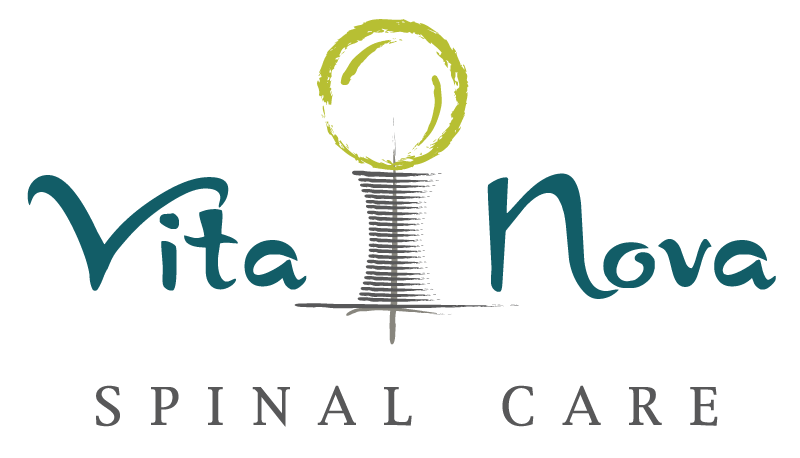“Better than 90% of the brain’s output is directed towards maintaining your body in its gravitational field. Therefore, the less energy one spends on one’s posture, the more energy is available for healing, digestion and thinking.”
tensegrity
You are not a stack of bones balanced atop each other like a tower, but more like a balloon which holds its shape in perfect tension or a position of tensegrity. The body is perfectly created to run efficiently when it’s in balance and this position is the platform for health. Without this balanced, up and open posture, the body cannot heal itself inside and out, and optimal health cannot be realized.
In a position of tensegrity, the body’s cells, tissues, organs, joints, muscles and nerves work in perfect harmony to create health and wellness. If this harmony is disrupted through injury or stress, the body will attempt to heal itself or adapt to its new condition by compensating. Unfortunately, it can only compensate for so long before pain and disease set in. This is your body’s way of telling you it’s in trouble and needs help.
Postural distortion always precedes disease.
Imbalance shows up with one leg being longer or shorter, one hip lower or higher, twisting of the body framework, muscular imbalance, abnormal movement, and over time, progressive wear and tear. If distortions are not corrected, the long-term effect is degeneration of that part of the body serviced by restricted messages, resulting in mild to severe pain, lowered resistance to illness, behavioral changes, organ dysfunction, loss of mobility in limbs, and ultimately disease.
The QSM3 protocol is the only healthcare approach that takes the tensegral view of the body and accurately correct the interference between the brain and the body for the ULTIMATE EXPRESSION of life’s vital healing energy.
Lasting results. Fewer visits.
When the body is aligned, it regains its up and open position and health flourishes from the inside out.
During the corrective care phase, muscles and other tissues are allowed to heal more completely, thereby helping prevent injury. It typically takes 4 weeks for the muscles to gain a new memory and up to 20 weeks for new neurological patterns to develop.
Structural changes depend on the extent of the injury and how long you've had the misalignment. It is typical to need care 8 to 10 times in the first 4 weeks, 4 to 8 times per month for 5-12 weeks and 2 to 4 times the following 6-8 months.
The course of your treatment is dependent on your overall health, severity of your problem and the amount of stress in your life. Regular exercise will also help decrease the frequency of visits.
Once your body begins to hold its correction for an extended period of time, you begin to recognize when you're in & out of alignment, which helps you to determine when you need to get adjusted. Your health and wellness are our top priority.
Gentle chiropractic. Profound change.
The basis of NUCCA & QSM3
With the NUCCA correction method, the spinal column remains straight and balanced where the weight of the head is centered over the neck. NUCCA recognizes that imbalances can cause stress, tension and pressure on the entire nervous system, most importantly the brain stem (base of the brain). Since our bodies shuttle millions of electrical and chemical impulses back and forth from the brain to every cell each day, any restriction or distortion of those messages can affect every body function from breathing to digestion to circulation, and have long-term effects if left untreated. The NUCCA chiropractor understands this and works to address alignment issues with the NUCCA technique.
The atlas bone and its significance
The atlas is the top-most vertebra in the spine with a ring-like shape that surrounds the area below the brain stem. The Atlas, along with the Axis, forms the joint connecting the skull and spine and are specialized to allow a greater range of motion than normal vertebrae—the nodding and rotation movements of the head.
When the Atlas bone is misaligned, referred to as the Atlas Subluxation Complex Syndrome (ASC), pressure is placed on the brain stem causing far-reaching neurological effects. The position of the Atlas is critical to the proper function of the nervous system.
What is the nervous system?
The nervous system is the control system that regulates and orchestrates every function within the body. It is made up of the brain, brainstem, spinal cord and nerves that go to all tissues, muscles, and organs throughout the body.
It’s four primary functions are:
The control and regulation all vital body functions (ie. circulation, breathing, digestions, etc.)
Activation of the muscles allowing us to move
Allows us to sense, perceive and feel
Relates us to the world outside (how we learn, experience and behave, etc.)
The Atlas and the nervous system
Because there are no strong inter-vertebral discs above or below the Atlas, it is the weakest link—it is more likely to become misaligned than other vertebrae in the body. Think of the Atlas as the top link in a chain. When it becomes misaligned, the rest of the chains (or spine) follow suit.
How does the Atlas become misaligned?
Accidents and injuries throughout one’s life can create or contribute to a misalignment. The injury can occur as early as the birthing process, during one’s early developmental stages, from a sports injury, car accident, or something as simple as sleeping in an awkward position. Even a minor spinal trauma will affect the nervous system and interfere with normal growth and healthy function. Accumulative repetitive stress injuries occur throughout one’s life, and left uncorrected, these small traumas can have far-reaching effects.
What does this mean for me?
When a person has an Atlas bone misalignment, several things may happen.
Their head may tilt or rotate, sometimes subtly or obviously. When the brain stem is under pressure, the muscles on one side will contract causing the shoulder to lift on one side, and in further efforts to maintain balance, the opposite hip will drop, and one leg will appear to be short.
The following is a list of noticeable physical effects:
Shorter range of motion
Uneven wear and tear on muscles and joints (ie, hips and knees) and greater likelihood of stress and injury over time
Decreased energy utilization
Loss of complete coordination
Many other effects go unseen.
“Research shows that when we adjust the spine, we significantly decrease activity in the prefrontal cortex. “The study showed a change in brain function by almost 20% on average.”
The recent study quoted above shows that adjusting the subluxated spine changes brain function, such as improvements in sensorimotor function relevant to falls-prevention; better joint-position sense in both the upper limb and the lower limb; improved muscle strength in lower limb muscles; better pelvic floor control; and better ability to carry out mental rotation of objects.
Why is body balance so important?
Extensive research and clinical studies show that improved body balance effectively reduces tension throughout the body, helping to relieve pain and stress, and enhance physical performance. Better balance is critical for performance and optimum health. Without body balance, normal body motion becomes abnormal, and places uneven wear and tear on bones and joints, making them more likely to be injured.
What are the lasting effects of NUCCA care?
Because of the relationship between the Atlas, the whole spine, and the function of the nervous system, NUCCA chiropractic has been known to help people with many different kinds health complaints.
While NUCCA isn’t a treatment for any one condition, new body balance will help with proper nerve function, and in turn, many conditions are known to improve in association with NUCCA care.




